
On the 8:20 a.m. boat to Alcatraz, no one gawks at the spectacular views of San Francisco along the shore of the bay. It’s cold and overcast, as is typical for late spring. The conversations are familiar and collegial—this ferry is limited to people who work on the island, including National Park Service rangers, volunteers, and maintenance personnel. The 22-acre rocky island of Alcatraz is less than two miles north of downtown San Francisco, so the journey lasts only about 10 minutes. Since the maximum security Alcatraz Federal Penitentiary closed in 1963, after just under three decades of operation, the prison’s picturesque location and former celebrity inmates have generated reams of tourism-industry copy, inspired numerous Hollywood films, spawned urban legends, and made Alcatraz Island one of America’s most popular National Park Service sites. Yet few know about the island’s pre-prison history.
The first European to visit Alcatraz is thought to have been the Spanish explorer Juan Manuel de Ayala, who sailed his ship San Carlos into San Francisco Bay in August 1775 and named one of its islands Isla de los Alcatraces, “Island of the Pelicans” or “Strange Birds.” In the mid-nineteenth century, the island became home to Fort Alcatraz, one of the first U.S. military fortifications constructed on the West Coast. It was also the site of the West Coast’s first lighthouse.
Esta historia es de la edición September/October 2020 de Archaeology.
Comience su prueba gratuita de Magzter GOLD de 7 días para acceder a miles de historias premium seleccionadas y a más de 9,000 revistas y periódicos.
Ya eres suscriptor ? Conectar
Esta historia es de la edición September/October 2020 de Archaeology.
Comience su prueba gratuita de Magzter GOLD de 7 días para acceder a miles de historias premium seleccionadas y a más de 9,000 revistas y periódicos.
Ya eres suscriptor? Conectar

ORIGINS OF PERUVIAN RELIGION
While investigating looters' holes at the site of La Otra Banda in northern Peru's Zaña Valley, archaeologist Luis A. Muro Ynoñán of the Field Museum and the Pontifical Catholic University of Peru spotted carved blocks around seven feet below the surface.
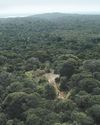
ISLAND OF FREEDOM
Many of the enslaved Africans sent to Brazil beginning in 1549 were from what is now Angola, where one of the most widely spoken languages was Kimbundu.
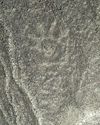
NAZCA GHOST GLYPHS
From the 1940s to the early 2000s, geoglyphs were discovered in the Nazca Desert of southern Peru depicting animals, humans, and other figures at the rate of 1.5 per year.

COLONIAL COMPANIONS
The ancestry of dogs in seventeenth-century Jamestown offers a window into social dynamics between Indigenous people and early colonists.
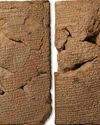
BAD MOON RISING
The British Museum houses around 130,000 clay tablets from ancient Mesopotamia written in cuneiform script between 3200 B.C. and the first century A.D.
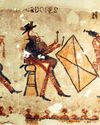
DANCING DAYS OF THE MAYA
In the mountains of Guatemala, murals depict elaborate performances combining Catholic and Indigenous traditions
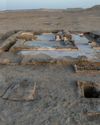
LOST GREEK TRAGEDIES REVIVED
How a scholar discovered passages from a great Athenian playwright on a discarded papyrus

Medieval England's Coveted Cargo
Archaeologists dive on a ship laden with marble bound for the kingdom's grandest cathedrals
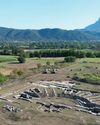
Unearthing a Forgotten Roman Town
A stretch of Italian farmland concealed one of the small cities that powered the empire
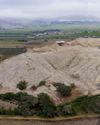
TOP 10 DISCOVERIES OF 2024
ARCHAEOLOGY magazine reveals the year's most exciting finds